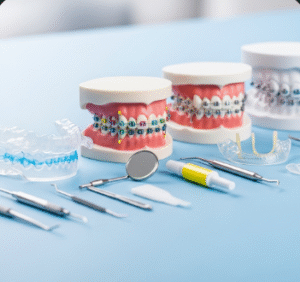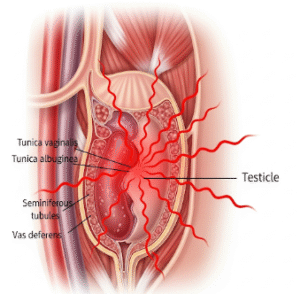Overview
Minimally Invasive Surgery (MIS) is a surgical approach that uses small incisions, specialized instruments, and advanced visualization techniques to perform operations with less trauma than traditional open surgery. It is widely used for procedures in gastrointestinal, gynecological, urological, orthopedic, and cardiothoracic surgery.
In Korea, MIS is performed using state-of-the-art laparoscopic, robotic-assisted, and endoscopic techniques, ensuring faster recovery, reduced pain, and minimal scarring, while maintaining high surgical precision and safety.
Highlights:
- ✅ Smaller incisions and reduced scarring
- ✅ Less postoperative pain and faster recovery
- ✅ Shorter hospital stay
- ✅ Advanced robotic and laparoscopic technology available
What is Minimally Invasive Surgery?
Minimally Invasive Surgery involves performing surgical procedures using small incisions (often 0.5–1.5 cm), cameras, and specialized instruments. Surgeons visualize the operative area on a monitor using a laparoscope or endoscope, allowing precise manipulation.
Common applications include:
- Laparoscopic cholecystectomy (gallbladder removal)
- Appendectomy
- Hernia repair
- Gynecological procedures (hysterectomy, oophorectomy)
- Orthopedic arthroscopic surgeries
- Cardiothoracic interventions (minimally invasive heart valve surgery)
Important: MIS offers reduced tissue trauma, lower infection risk, and faster rehabilitation compared to traditional open surgery.
What are the benefits?
- Smaller incisions: Reduced scarring and improved cosmetic results
- Faster recovery: Patients return to daily activities sooner
- Less pain: Lower postoperative discomfort and reduced need for analgesics
- Shorter hospital stay: Often outpatient or 1–3 days inpatient
- Reduced complications: Lower risk of infection, bleeding, and adhesions
Key benefits highlighted:
- ⚡ Enhanced precision and visualization for the surgeon
- ⚡ Faster healing and improved patient satisfaction
- ⚡ Reduced postoperative complications
- ⚡ Applicable to a wide range of surgical specialties
Procedure Details
1) How should I prepare for Minimally Invasive Surgery?
- Preoperative evaluation: Blood tests, imaging (ultrasound, CT, MRI), ECG, and specialist consultations depending on the surgery type
- Medication review: Stop blood thinners or medications as instructed
- Fasting: 8–12 hours before surgery
- Consent and counseling: Discuss type of MIS, risks, expected recovery, and alternatives
- Lifestyle preparation: Arrange for postoperative support, transportation, and rest
2) What happens during Minimally Invasive Surgery?
- Anesthesia: General anesthesia is most commonly used
- Incision(s): Small incisions made for insertion of camera and instruments
- Surgical procedure:
- Surgeon uses laparoscope or endoscope to visualize the operative field
- Specialized instruments manipulate, cut, or remove tissue
- Robotic-assisted systems may enhance precision for complex procedures
- Closure: Incisions closed with sutures or surgical glue; dressings applied
Duration: Usually 1–4 hours depending on procedure complexity
3) What happens after Minimally Invasive Surgery?
- Recovery monitoring: Observation for bleeding, infection, and vital signs
- Pain management: Mild to moderate analgesics as needed
- Activity: Gradual mobilization; return to light activities within days
- Follow-up care: Wound inspection, suture removal, imaging if required
Highlights for post-procedure care:
- ⚡ Mild swelling or bruising is common
- ⚡ Minimal scarring compared to open surgery
- ⚡ Avoid heavy lifting until cleared by your surgeon
- ⚡ Attend follow-up appointments to monitor healing and surgical outcomes
Risks / Benefits
Risks:
- Infection at incision sites
- Bleeding or hematoma formation
- Injury to adjacent organs or structures
- Rare conversion to open surgery if complications arise
Benefits:
- Smaller incisions and faster recovery
- Reduced pain and minimal scarring
- Lower complication rates than open surgery
- Suitable for a wide range of procedures across surgical specialties
Recovery and Outlook
- Hospital stay: Usually 1–3 days depending on procedure
- Full recovery: 1–4 weeks for daily activities; longer for major procedures
- Long-term outlook: Excellent; most patients resume normal function quickly
- Follow-up: Wound inspection, imaging if necessary, and check-ups with surgeon
Tips for optimal recovery:
- ✅ Follow dietary and activity instructions
- ✅ Keep incisions clean and dry
- ✅ Attend all follow-up appointments
- ✅ Monitor for signs of infection or unusual pain
When To Call the Doctor
- Fever, chills, or signs of infection
- Excessive swelling, redness, or discharge from incisions
- Severe pain not relieved by medication
- Vomiting, difficulty breathing, or other unusual symptoms
- Concerns about wound healing or surgical outcomes
Best Korea Option / Process
Korea provides advanced Minimally Invasive Surgery care:
- Top hospitals: Specialized centers for laparoscopic, endoscopic, and robotic surgery
- Advanced technology: High-definition cameras, robotic assistance, and minimally invasive instruments
- Comprehensive care: Preoperative assessment, surgery, postoperative monitoring, and rehabilitation
- Shorter hospital stays and faster recovery: Outpatient or brief inpatient stays depending on procedure
- International patient support: Online consultations, appointment scheduling, and telemedicine follow-up
Step-by-step process in Korea:
- Preoperative consultation and imaging assessment
- Minimally invasive procedure performed under general anesthesia
- Postoperative monitoring, pain management, and early mobilization
- Discharge with detailed home care instructions
- Follow-up visits for wound healing, recovery progress, and outcome evaluation













